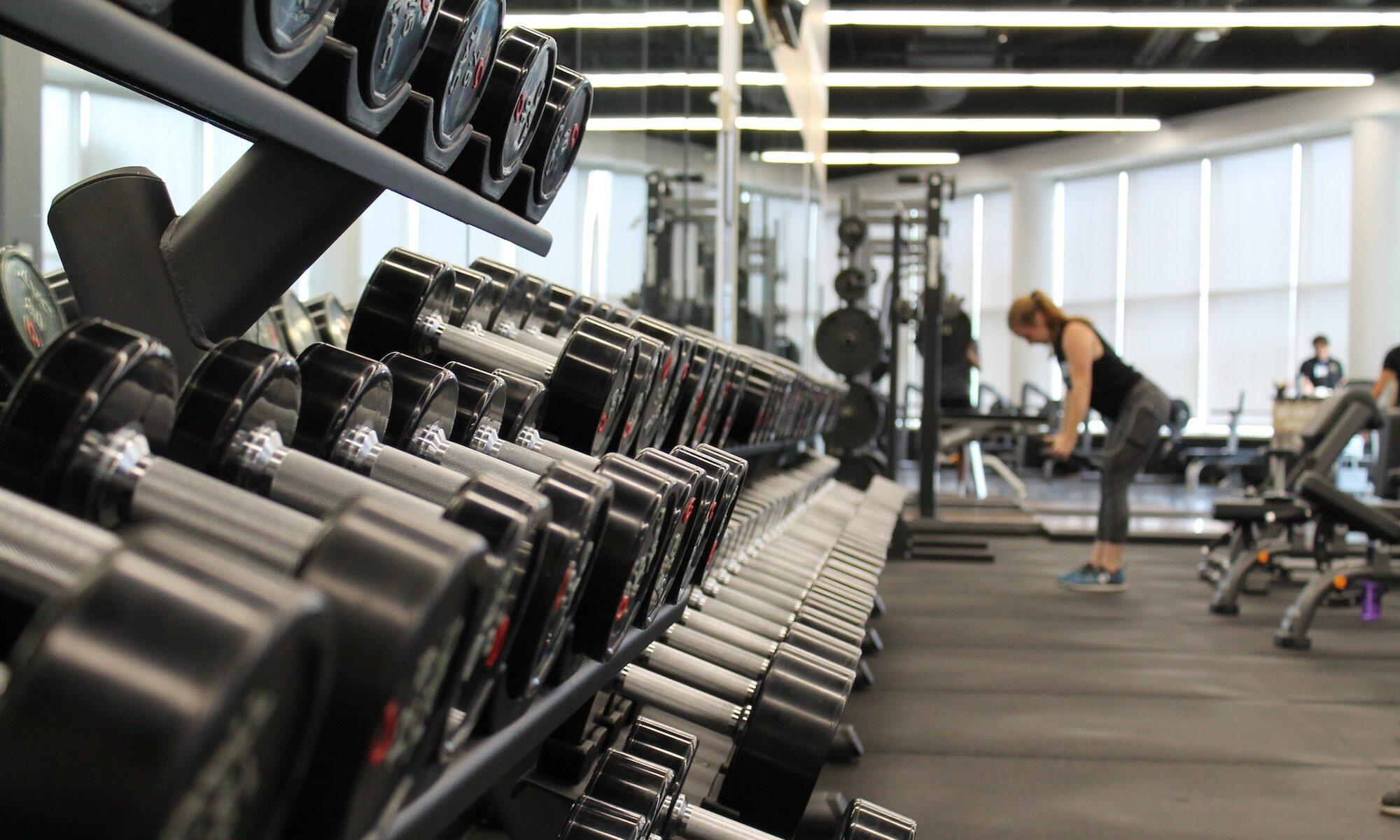Looking to shed those extra pounds? Discover the effectiveness of cardio workouts for weight loss. Burn calories, improve cardiovascular health, and achieve your fitness goals.
Are you looking for an effective way to shed those extra pounds? Well, look no further! In this article, we explore the effectiveness of cardio workouts for weight loss. Whether you’re a gym enthusiast or simply prefer to exercise at home, cardio workouts offer a variety of options to help you reach your weight loss goals. From running and cycling to dancing and swimming, these heart-pumping exercises not only burn calories but also improve cardiovascular health. So, grab your sneakers and get ready to embark on a journey towards a fitter and healthier you!
What Are Cardio Workouts?
Definition of cardio workouts
Cardio workouts, also known as cardiovascular exercises or aerobic exercises, are activities that increase the heart rate and respiratory rate. These exercises involve the large muscle groups and aim to improve cardiovascular endurance. The term “cardio” comes from the word “cardiovascular,” which refers to the heart and blood vessels. Cardiorespiratory fitness is crucial for overall health and can be enhanced through regular cardio workouts.
Different types of cardio workouts
There are various types of cardio workouts that can be incorporated into a fitness routine. Some popular examples include running, jogging, cycling, swimming, brisk walking, dancing, jump rope, and aerobic classes. These activities can be performed both indoors and outdoors, providing flexibility and variety to individuals. It is important to choose cardio exercises that are enjoyable and suit individual preferences to maintain long-term adherence.
How Does Weight Loss Occur?
Caloric deficit and weight loss
Weight loss occurs when the body is in a caloric deficit, which means that you are burning more calories than you consume. This deficit can be achieved through a combination of dietary changes and increased physical activity. When energy expenditure exceeds calorie intake, the body taps into its stored fat reserves to obtain the energy it needs, resulting in weight loss over time.
Role of exercise in weight loss
Exercise plays a crucial role in weight loss by increasing energy expenditure and creating a larger caloric deficit. Cardio workouts, specifically, have been found to be effective for burning calories and promoting weight loss. Engaging in regular cardio exercises not only increases the number of calories burned during the workout but also enhances overall metabolic rate, leading to continued calorie burning even at rest.
Cardio Workouts and Weight Loss
Effectiveness of cardio workouts for weight loss
Cardio workouts are highly effective for weight loss when combined with a balanced diet. These exercises elevate the heart rate and increase energy expenditure, thereby facilitating the burning of stored fat. According to research, individuals who regularly engage in cardio activities experience greater weight loss than those who solely focus on dietary modifications.
Calories burned during cardio workouts
The number of calories burned during cardio workouts varies depending on factors such as duration, intensity, and individual characteristics. On average, moderate-intensity cardio exercises, such as brisk walking or cycling, can burn approximately 300-400 calories per hour. High-intensity exercises, such as running or swimming, may burn even more calories within the same time frame. Consistency and adherence to a regular cardio routine are key for maximizing calorie burn and achieving weight loss goals.
Improvement in cardiovascular health
In addition to weight loss, cardio workouts provide numerous benefits for cardiovascular health. Regular engagement in these activities strengthens the heart muscle, improves blood circulation, and lowers blood pressure. Cardio exercises also increase the levels of HDL (good) cholesterol while reducing LDL (bad) cholesterol, thereby reducing the risk of heart disease and promoting overall heart health.
Boosting metabolism for weight loss
Cardio workouts have the potential to boost metabolism, which is the rate at which the body burns calories. This metabolic enhancement can occur both during and after exercise. High-intensity cardio exercises, such as interval training, have been found to have a significant impact on post-exercise calorie burn. This effect, known as excess post-exercise oxygen consumption (EPOC), can lead to increased calorie expenditure even after the workout is completed.
Factors Affecting Weight Loss with Cardio Workouts
Duration and intensity of cardio workouts
The duration and intensity of cardio workouts play a significant role in determining weight loss outcomes. Longer duration exercises, such as running for 60 minutes, may burn more calories compared to shorter duration exercises. Similarly, higher intensity workouts, such as sprinting or high-intensity interval training (HIIT), can result in greater calorie burn and metabolic impact. It is important to find a balance that suits individual fitness levels and goals while avoiding overexertion or injury.
Frequency of cardio workouts
The frequency of cardio workouts also affects weight loss. Consistency is key, as regular participation in cardio exercises leads to a cumulative calorie deficit over time. The American Heart Association recommends at least 150 minutes of moderate-intensity aerobic exercise or 75 minutes of vigorous-intensity exercise each week. To maximize weight loss, it is beneficial to spread these sessions throughout the week, allowing for recovery and adaptation.
Individual factors affecting weight loss
Individual factors, such as age, sex, genetics, and body composition, can influence weight loss with cardio workouts. Older individuals or those with certain medical conditions may have different responses to exercise. Genetics can also play a role in determining how quickly an individual loses weight. Additionally, body composition, including muscle mass and fat distribution, can impact metabolic rate and the rate at which calories are burned during cardio exercises.
Combining Cardio Workouts with Other Exercises
Strength training and weight loss
While cardio workouts are effective for weight loss, incorporating strength training into a fitness routine can enhance the results. Strength training exercises, such as weightlifting or bodyweight exercises, build lean muscle mass. Increased muscle mass contributes to a higher resting metabolic rate, allowing the body to burn more calories throughout the day. Furthermore, strength training helps preserve existing muscle while in a calorie deficit, preventing muscle loss during weight loss efforts.
High-intensity interval training (HIIT)
High-intensity interval training (HIIT) is a form of cardio exercise that involves short bursts of intense exercise alternated with periods of rest or lower intensity activity. HIIT has gained popularity due to its time-efficient nature and its potential to maximize calorie burn. Research has shown that HIIT can lead to similar or even greater weight loss results compared to traditional moderate-intensity cardio exercises. It is important to gradually increase HIIT intensity to avoid overexertion and minimize injury risk.
Cross-training for better results
Cross-training, which involves incorporating a variety of exercises into a workout routine, can help prevent boredom, reduce the risk of overuse injuries, and enhance weight loss outcomes. By combining different cardio workouts, such as cycling, swimming, and running, individuals can engage different muscle groups and challenge the body in new ways. Cross-training also provides a well-rounded approach to fitness, targeting various aspects of cardiovascular fitness and overall health.
Creating an Effective Cardio Workout Plan
Setting weight loss goals
Before starting a cardio workout plan, it is important to set realistic and specific weight loss goals. Setting clear objectives can help motivate and guide your efforts. Determine the amount of weight you want to lose and the timeframe in which you aim to achieve this goal. It is also beneficial to establish smaller milestones along the way to track progress and celebrate achievements.
Choosing appropriate cardio exercises
When creating a cardio workout plan, it is essential to choose exercises that you enjoy and that align with your fitness level and goals. Consider incorporating a variety of cardio activities to prevent boredom and work different muscle groups. If you are a beginner, start with low-impact exercises such as walking or swimming, gradually increasing the intensity and duration as your fitness improves. Consult with a fitness professional for guidance on appropriate exercises based on your individual needs.
Progressive overload and variety
To continue seeing results with cardio workouts, it is important to apply the principle of progressive overload. This means gradually increasing the intensity, duration, or frequency of your workouts over time. By challenging your body with progressive increases, you can avoid plateaus and continue to make progress towards your weight loss goals. Additionally, incorporating variety into your cardio routine can prevent adaptation and keep your workouts engaging.
Managing rest and recovery
Rest and recovery are crucial components of any fitness program, including cardio workouts. Allow your body adequate time to recover between intense exercise sessions to prevent overuse injuries and optimize performance. This can be achieved by scheduling rest days throughout the week and ensuring you prioritize quality sleep. Listen to your body and adjust your cardio workouts as needed to avoid excessive fatigue or burnout.
Formulating a Balanced Diet for Weight Loss
Importance of nutrition in weight loss
While cardio workouts can contribute to weight loss, proper nutrition plays a fundamental role in achieving and maintaining a healthy weight. A balanced diet provides essential nutrients, supports overall health, and complements exercise efforts. It is crucial to focus on consuming nutrient-dense foods that are rich in vitamins, minerals, fiber, and lean sources of protein while minimizing the intake of processed foods, added sugars, and unhealthy fats.
Caloric intake and macronutrient distribution
To promote weight loss, it is important to create an appropriate caloric deficit through diet. Calculate your daily caloric needs based on factors such as age, sex, weight, and activity level, and aim to consume fewer calories than you expend. Additionally, paying attention to macronutrient distribution can help optimize weight loss. A balanced diet should include adequate protein to support muscle growth and repair, complex carbohydrates for sustained energy, and healthy fats for various bodily functions.
Timing of meals and snacks
The timing of meals and snacks can also impact weight loss and energy levels during cardio workouts. Fueling your body with a balanced meal or snack before exercise can provide the necessary energy for optimal performance. Aim to have a meal or snack that contains carbohydrates, protein, and healthy fats about 1-2 hours before your cardio session. After a workout, refuel with a combination of protein and carbohydrates to aid in muscle recovery and replenish glycogen stores.
Monitoring Progress and Adjusting Workouts
Tracking weight loss
When engaging in a cardio workout plan for weight loss, it is important to track your progress regularly. Use a combination of methods such as weighing yourself, measuring body circumference, and assessing body composition changes. Keep in mind that weight loss may not always be linear and can vary due to various factors. Instead of solely focusing on the number on the scale, pay attention to how you feel, your energy levels, and changes in your body composition.
Evaluating changes in body composition
In addition to weight loss, changes in body composition, including muscle gain and fat loss, are important markers of progress. Consider taking measurements of specific body areas, such as waist circumference, to assess changes in body fat distribution. Clothing fit and overall physique can also provide visual cues of your progress. Keep in mind that building muscle through strength training can result in weight maintenance or even slight weight gain, but can significantly transform your body composition.
Adapting cardio workouts as needed
As you progress in your weight loss journey, it is important to regularly evaluate and adjust your cardio workouts. Increasing the intensity, duration, or frequency of your exercises can help break through plateaus and continue to challenge your body. Additionally, incorporating new cardio activities or modifying existing ones can prevent boredom and provide variety. Consult with a fitness professional if you need assistance in making adjustments to your workout plan.
Potential Limitations of Cardio Workouts
Plateau in weight loss
It is common to experience plateaus in weight loss, where progress slows down or stops for a period of time. Plateaus can occur even with regular cardio workouts due to the body’s adaptation mechanisms and changes in metabolism. To overcome plateaus, consider modifying your exercise routine, adjusting caloric intake, or incorporating strength training. Remember that weight loss is not always linear, and consistency and patience are key to long-term success.
Lack of muscle mass gain
Cardio workouts primarily focus on cardiovascular endurance and calorie burning, which may not actively promote muscle mass gain. While cardio exercises can contribute to overall toning and strength, incorporating strength training exercises is essential for building muscle. Engaging in a well-rounded fitness routine that includes both cardio and resistance training can help optimize weight loss and shape the body.
Injury risks and precautions
Like any form of exercise, cardio workouts come with inherent risks of injuries. Common injuries associated with cardio exercises include sprains, strains, shin splints, and joint problems. To minimize the risk of injuries, it is important to warm up before each workout, wear appropriate footwear and clothing, use proper form and technique, and gradually progress the intensity or duration of your sessions. If you experience persistent pain or discomfort, consult with a healthcare professional.
Conclusion
In conclusion, cardio workouts are an effective tool for weight loss when combined with a balanced diet. These exercises promote calorie burn, improve cardiovascular health, and boost metabolism. When planning a cardio workout routine, consider factors such as duration, intensity, and frequency to optimize weight loss outcomes. It is important to individualize your approach, incorporate other forms of exercise, monitor progress, and pay attention to nutrition to achieve sustainable and long-lasting results. Remember, consistency, patience, and enjoyment are key elements for success in your weight loss journey. So put on your running shoes, grab your fitness gear, and embark on your cardio adventure for a healthier, happier you!


